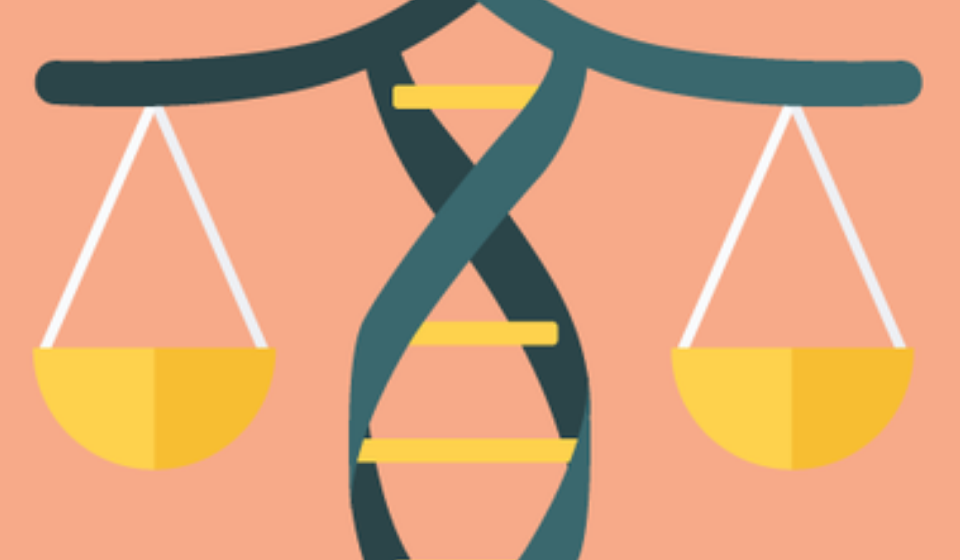This article examines main challenges of patenting human genes. In the light of modern achievements in biotechnology and genetics, these problems are of current interest. The article also touches on the ethical issues of patenting biological sequences, as well as the legal regulation of such patenting.
A patent is a means of regulating the use of intellectual property, certifying the exclusive right to use the invention during the term of the patent in the country of its receipt. In different countries, the validity periods of patents for inventions may be different, in Azerbaijan Republic, the duration of protection of an invention begins from the date of filing the application and is 20 years for invention, 10 years for utility model and for an industrial design (5, p.4).
To obtain a patent in different countries, several requirements must be satisfied, and its terms of action often differ. However, all patent laws are characterized by the desire to ensure the protection of intellectual property without over-imposing bans on publicly accessible objects. As a rule, to obtain a patent, following conditions should be justified:
- The novelty of the invention
- Non-obviousness of the claim for specialists of the same field (a patent cannot be issued on laws of nature, physical phenomena or abstract ideas),
- Industrial applicability. Compliance of the subject matter of patent with the required conditions is determined by the group of experts. Without the purchase of a license from the patent holder, the objects of patenting cannot be used for commercial purposes.
For a long time there have been disputes about the possibility of patenting biological objects: if biological objects were created by nature, then can a person be a patent holder for them and can one claim about inventive novelty? Now it is authorized to obtain a patent for combinations or derivatives of objects of nature, for example, artificial microorganisms, however an organism existing in nature cannot be the subject of patents, if the work of the applicant is only in his description and does not carry any changes.
A patent for genes is the exclusive right to a specific biological sequence granted to a person directly involved in identifying this sequence or working on its transformation. Depending on the patent legislation of a specific country, the patent holder is entitled to determine who and under what conditions the patented object may be used, for example, the purpose may be to conduct clinical genetic testing.
In assessing the novelty of an invention related to biological sequences, the question of the number of changes made in the identification and extraction process may arise. The argument here is that the DNA that is not inside the cells is patented, and the isolated and purified molecules necessary for specific purposes, for example, indicators of any diseases which are not found in nature as well as methods based on identification of them can be considered an invention. Isolated and modified DNA may have new or modified functions, some improved properties that different from those found in DNA only in the body. Therefore, taking into account work which invests in allocation and identification of a gene and the changes made to properties of a product of this gene it is necessary to separate the patented sites of DNA from DNA found in living organisms. In addition, the invention can be considered the delimitation of the sequence in which it can, for example, more effectively perform its function.
It is impossible to consider this issue outside the historical context. The development of genetics and molecular biology often occurred in the context of legislation, which did not have time to adjust to modern technologies.
Completion of sequencing (reading of the nucleic acid sequence) of the human genome has led to massive gene patenting in the United States. Thousands of patents were granted in the United States by the Patent and Trademark Office (USPTO), and patents for genes were also granted by the European Patent Office. It is estimated that, in general, about 20% of the human genome has been patented. As a rule, patents on genes associated with the development of various diseases were obtained. It should be noted that patented DNA fragments were unevenly distributed across the genome: many patents accounted for the studied areas, for example, the targets of any drugs or marker areas studied in the diagnosis of the disease, but the areas with less obvious functionality were of less interest (1. p, 239).
One of the most famous examples of gene patenting is the patents of Myriad Genetics for the BRCA1 and BRCA2 genes, tumor suppressors, various mutations in which various mutations increase risk of development of breast and ovarian cancer. These patents gave Myriad Genetics exclusive rights to create and conduct diagnostic tests for these loci. The monopoly of this company to conduct such tests has led to strong debates on the legal and ethical status of patents on the parts of the human genome (4, p.139).
This and other cases caused great public response and as a result led to the fact that in 2013 the US Supreme Court ruled that genes could not be patented: “human genes cannot be patented in the USA, since DNA is a product of nature” (2. p,872). The decision of the US Supreme Court invalidated previous patents, making previously patented genes available again for research and for commercial genetic testing. In addition, the resolution of the US Supreme Court has allowed the patenting of modified DNA. Now the sequences themselves are patented less frequently, but patents are issued for their use in industry, when creating new methods and technologies. Databases with the genomes of various organisms, in particular humans, are available to researchers, and new genomes are published in open access.
It is important to consider the philosophical aspect of this problem, in particular, the ethical one. Ethical problems arise with the development of technology in all areas of science that consider a person as an object of a study. Among the ethical aspects under consideration is the problem of accessibility of diagnostics of diseases, genetic tests and therapy – can analysis of some genes for diagnostics and treatment of diseases be prohibited? The problem of biotechnology may also raise – can they be prohibited to study and grow varieties that bring more yield?
The moral and ethical conflict in patenting matters comes down to the following dilemma: one party to the conflict supports the need to obtain patents and considers it as protection of intellectual property and guarantee of further development of science, while the other side expresses concern about the patenting of natural objects. Often, patented inventions have been acquired through hard work, and many scientists support patenting system, seeing in it a way of stimulation of further research. Someone may see the possibility of patenting parts of the human genome, the possibility of patenting a person as a whole, and sometimes the possibility of owning a person. However, the ownership of the patent and the ownership of the patent object as property should be separated. A patent for a gene does not grant ownership of organisms containing this gene, not only because the patent object is different from that found in nature, but also because patent rights do not give positive ownership rights (3, p.4).
It is necessary to consider different points of view on the advantages and disadvantages of gene-related patent laws.
On the one hand, the patenting of genes can give companies that have patented sequence, time to research a patent object without competition — these companies do not need to worry about other companies competing with them to make new discoveries. With patenting, small organizations with limited financial support can gain competitiveness. Obtaining patents for biological sequences can contribute to the development of research directions in business and increase investment in the industry. The laws of several countries include the possibility of scientists researching objects of patenting and the impossibility of their commercial use only; in some countries, special agreements in patenting, thanks to which researchers can be allowed to study patented genes are concluded.
On the other hand, obtaining patents for genes can slow down research in potentially important areas of science and hinder its development, because such patents provide owners with exclusive intellectual property rights to patented sequences for decades. This can lead to monopolization of genetic constructs and contribute to increasing secrecy in the scientific environment, leading to a slowdown in scientific progress. Other companies will not be allowed to work with patented genes, which may miss opportunities to make important discoveries. Because of patents that overlap certain areas, companies may neglect important topics for research, and there may be no incentive for them to invest in a new discovery if they do not guarantee patent protection.
In addition, the exclusivity of the right to biological sequences can lead to delays in obtaining effective diagnostic remedies due to the reluctance or inability of other companies to pay royalties and work on new methods only to the patent holder, which is much less effective in the absence of both possible competition and collaboration. Due to the financial factor associated with patenting genes, it can slow down exploring areas that do not lead to direct financial gain, such as basic research.
Thus, permitting gene patenting can lead to monopolization of this industry, and prohibition can reduce the number of companies interested in its development. Only by careful consideration of all aspects of patent policy regarding genes can such an agreement be reached in a society that will promote scientific progress and take into account all possible dangers.
REFERENCES:
- Jensen K., Murray F. “Intellectual property landscape of the human genome”, Science, 2005.
- Kesselheim A. S. et al. “Gene patenting – the Supreme Court finally speaks”, The New England journal of medicine, 2013.
- Lever A. “Is It Ethical To Patent Human Genes? Intellectual Property and Theories of Justice”. – Palgrave Macmillan UK, 2008.
- Williams-Jones B. History of a gene patent: tracing the development and application of commercial BRCA testing, Health LJ, 2002.
- The Law of the Azerbaijan Republic on patent, article 10.
Bu bloqda yerləşdirilən məqalələr hüquqi məsləhət xarakteri daşımır və belə olaraq nəzərə alınmamalıdır. Əlaqədar məsələ üzrə hüquqi dəyərləndirmənin və məsləhətin əldə olunması üçün müvafiq hüquqi məsləhət xidmətləri göstərən şəxsə müraciət etməyiniz tövsiyə olunur.


